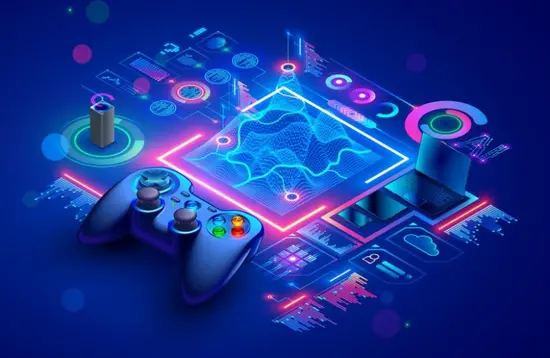Comparison of Single-Currency and Dual-Currency Models of GameFi Tokens
Author: Nat Eliason
Compiled by: saku, SeeDAO
As far as I know, whether to use a single-token model or a dual-token model is one of the most common questions faced by teams designing the economic models of cryptocurrency games.
Previously, my default answer to this question was to use a dual-token model, but now I am rethinking that answer. I believe that each choice can be supported by compelling reasons. In this article, I will attempt to explain some of the nuances between the two options. Additionally, there may be a way to capture the advantages of both the single-token model and the dual-token model, as I will explain in detail at the end of the article.
Although you can apply the thinking model of this article to other crypto projects, it will primarily focus on crypto games. Games are a great scenario for studying token models, as the utility of tokens in game projects is often more abundant and apparent than in other types of projects.
Anyway, let’s dive into the ocean of token models.
What is the purpose of the token?
The main role of tokens in blockchain games should be to improve the game economy in a way that cannot be achieved through other mechanisms.
Tokens are often used for many things outside of improving the game economic ecosystem, such as speculation. But as I explained in "Blockchain Games Have Been Ruined," these other uses ultimately harm the quality of the game itself and its future.
So how can tokens improve the game economic ecosystem in a new way? I believe the primary way to achieve this is by establishing a closed loop for small, quick transactions. Rather than saying that players unlock some additional features in the game through small, quick transactions is a one-way street, it is more accurate to say that tokens create a two-way street where players can both spend in the game and extract their work results from the game. This allows those who invest a lot of time in the game to exchange their time for funds while also enabling capital holders to save time by using funds for consumption.
These transactions can occur in two forms:
Application Transactions: In application transactions, players can obtain battle passes, skins, treasure chest keys, or progress in the game through the in-game payment features.
Peer-to-Peer Transactions: In peer-to-peer transactions, players pay each other for resources in the game (NFTs, currency, or other items).
These transactions have existed in games for a long time. We are all familiar with in-game trading and auction houses. The biggest difference with tokens is that they can establish a liquid market between the game and real money, creating a broad avenue for players to convert the wealth they earn from being deeply invested in the game into dollars through some additional steps.
In my view, the importance of other utilities brought by tokens should be placed after establishing a liquid market. This is not to say that other utilities do not exist, but the main value of introducing crypto tokens into games should be to establish a liquid market between the game and real money.
So, what other utilities are there? Fundraising is an important utility, speculation is another, and game governance can also be counted as one. As a more serious version of speculation, you could also consider cash flow and ownership as utilities. But we need to recognize that the introduction of tokens is often not to make the game better, but to provide funding for the game. Thus, the key question becomes whether the introduction of tokens will be done in a way that benefits the game and the community, or if it will end up being contrary to creating a good game.
Since the dual-token model is now commonly found in games, let’s start with the dual-token model.
Dual-Token Model
The dual-token model was pioneered by Axie Infinity. In their design, the dual-token model includes the governance token AXS and the in-game token SLP.
AXS is a token with a fixed supply. This means it will appreciate over time. SLP, on the other hand, is an infinitely supply token, so it can be minted and burned as needed to balance the game.
In this model, AXS is essentially a security. Holding AXS is akin to holding stock in the Axie game. Of course, the Axie team cannot really admit this, but that is how they operate. Governance often serves as a facade of utility for security reasons. SLP is the true "game" token, as it underpins most of the game economic ecosystem.
Advantages of the Dual-Token Model
The benefit of the dual-token model is that it allows you to separate speculation from the game economic ecosystem. When you launch any product in the cryptocurrency world, people often speculate on it to achieve outstanding returns quickly. Separating tokens used for speculation from those used for playing can prevent investment surges from causing price spikes in the in-game economy. After all, you wouldn’t want a surge in speculation to suddenly push the prices of all items in the game sky-high.
Additionally, the dual-token model makes fundraising easier. Investors want a token with a fixed supply; only tokens with limited supply have the potential to appreciate in price for some reason later on. Considering that game developers can adjust the issuance, burning, and utility of tokens at any time, and may need to raise or lower the token's value to balance the game, a variable supply game currency is not an excellent investment asset.
The dual-token model composed of governance tokens and game tokens is also familiar to everyone. People can see two types of tokens from Axie and other games that follow its model, and they intuitively understand that one type of token can be used for speculation while the other can be used for playing. This is similar to how we think about money in real life, where gold and Bitcoin are assets you hold for investment purposes, while dollars are assets you use for consumption in real life.
Disadvantages of the Dual-Token Model
When a game is popular and the market is booming, the dual-token model seems perfect. One token remains relatively stable for players' gaming needs, while the other token steadily rises, giving people the thrill of speculation with prices always going up.
But when the music stops or slows down, people start to wonder: what is the point of the governance token? It seems impossible for people to hold game tokens worth millions of dollars just to vote on governance measures; they need something more.
The question of "what is the point of a limited token?" is the biggest drawback of the dual-token model. To address this, I propose the following solutions.
What is the point of a limited token?
Holding a purely speculative limited token ultimately leads to the question, "Hey, why are we holding this thing?" Speculation cannot guarantee price increases forever, so the token must have some meaning.
Some teams will add meaning to the token by increasing cash flow, usually achieved through staking. Here are two common paths to increase cash flow:
Dilution Protection: You stake your tokens in exchange for more of the same type of token. This is not real cash flow; it is merely dilution protection when more tokens are unlocked. But it at least still looks like "free money."
Dividends: Stakers receive other types of tokens generated from in-game consumption mechanisms. However, this is difficult to achieve because if you redistribute the funds collected through application transactions, then the transaction mechanisms that should have extracted excess tokens from the game economic system become ineffective. The game token becomes a Ponzi scheme. So, what you can redistribute is only the fees collected from peer-to-peer transactions.
Revenue sharing from peer-to-peer transaction fees can also be quite substantial. For most of the past month, STEPN has earned 2-3 million in transaction fees daily. With 600 million GMT tokens in circulation, let’s assume that half of them are staked when allowed. If the project team shares half of the transaction fees with GMT holders, then a million dollars will flow daily to the three million staked GMT, meaning each staked token will earn its staker three dollars a day. Considering that the average price of GMT last month was $1.5, that translates to a daily dividend of 0.2% or a 73% annual interest rate (not accounting for dilution effects). This is simply unbelievable. Although they haven’t done this, it does indicate that revenue sharing from peer-to-peer transaction fees can be quite substantial.
If a team does not want to increase cash flow, or if they want to add something beyond cash flow, they will increase the in-game utility of the limited token.
This is exactly what Axie did in the end—introducing AXS costs for the breeding mechanism in the game. In this case, the limited token becomes an additional in-game currency, distinguished from other tokens by its fixed supply, while other tokens can be infinitely minted. Game designers can choose whether to burn these used tokens or let them circulate again, using this choice as an additional adjustment mechanism for the game economic system.
In this way, the utility of the limited token becomes a trick. What are the uses of limited tokens and infinitely minted tokens?
You can try to distinguish these two types of tokens in any way, but ultimately the boundaries will become blurred. There are many good arguments to support using one type of token as a market token and the other as an application transaction token.
I believe that if a team wants to increase the utility of the limited currency, then this utility should have some impact on the supply of that token. The priority of increasing utility is to boost the value of the limited currency, but if it is merely used as a transactional currency like infinitely minted tokens, then holding it has no utility. You can buy it when you need it and sell it when you don’t. However, if the limited token is burned when used for some special upgrade mechanism in the game, then as the game becomes more popular, both the limited token and the upgraded assets will become more valuable in the future.
However, teams that embark on the dual-token model will ultimately encounter the issue of blurred boundaries between limited tokens and infinitely minted tokens. Unless they find a way to increase the value or utility of the limited currency, it will eventually be discarded, and many speculators will no longer hold the limited currency.
So, what happens if games try to use a single-token model?
Single-Token Model
Attempts at the single-token model are much rarer. But the single-token model offers much hope for solving the problems of the dual-token model.
It is worth noting that a single-token model does not mean there is only one currency in the game; rather, the currency that acts as a bridge between the in-game economic system and cryptocurrency is the only one.
There are several ways to achieve this.
Infinitely Minted Single-Token Model
One option is to create a single-token model that only uses infinitely minted currency. So far, I have not seen a successful case of this. However, following the token model I proposed in "Blockchain Games Have Been Ruined" makes sense.
This goes back to the point I made at the beginning of this article. The purpose of crypto assets in games is to allow people to exchange their in-game achievements for money outside the game.
If game studios want to achieve this without complicating token economics, here is an extremely simple method:
Step 1: Build an excellent game with an in-game market (like Runescape, World of Warcraft, or other great games).
Step 2: Establish a connection between the core game currency and the blockchain.
Add liquidity to the game currency with another token (like ETH, USDC, or other tokens).
And just like that, you have successfully created your blockchain game. It seems very simple, but in many cases, it has already met our needs. Imagine if Runescape had a highly liquid market for exchanging game currency and USDC. That would be amazing, right?
You don’t even need to turn game items into NFTs. To be honest, outside of the game, game items have no value. Just maintain a normal auction house where players can exchange all game items for game currency, and then establish a bridge for exchanging game currency for tokens, and a great blockchain game is born.
But why haven’t we seen such a simple blockchain game emerge? This is because creating an engaging game is extremely difficult. Many games are taking this approach, but the vast majority of such games have not been launched yet. But when they are finally launched, they will find it hard to be more attractive than those with exciting Ponzi models. To be honest, using a Ponzi model is a great market entry strategy that can stimulate initial hype.
Another drawback of the infinitely minted single-token model is that it does not provide tokens for speculative purposes. At least for now, it seems that projects need to offer some speculative opportunities to succeed in the crypto space. Additionally, because investors cannot obtain limited assets that can be held long-term with appreciation expectations, projects using the infinitely minted single-token model will also face difficulties in fundraising.
So, next, let’s think about what a limited supply single-token model would look like.
Limited Supply Single-Token Model
Can you build a blockchain game that only has a limited supply token? This is a path taken by some blockchain game platforms launched in earlier periods, like Sandbox and Decentraland. I believe we will see it become popular again as an upgraded version of the dual-token model.
Here is one way you might take. This is somewhat speculative, and I am still researching, so please don’t just copy it and assume it will work.
In this model, you can treat your limited token both as an investable asset and as a bridge between in-game currency.
But in the game, you still need some infinitely minted currency to better balance the game’s economic ecosystem. So you still need infinitely minted tokens, but they will be locked in the game without opportunities to be exchanged for outside the game.
This way, you can establish an in-game decentralized exchange that provides trading functionality between infinitely minted tokens and limited tokens (and of course can also provide trading functionality for other in-game assets). In fact, this is a better design for trading various resources in the game (like exchanging wood for gold) because it creates a liquid market in the style of SushiSwap or Uniswap, allowing players to trade anything instantly without needing a buyer on the other side.
Thus, players can exchange limited tokens for game currency at any time and transfer the value of limited tokens outside the game. Alternatively, they can transfer in limited tokens to purchase various in-game items like wood, gold, or anything they want.
Since limited tokens have a fixed supply, while all items in the game may face inflation, the purchasing power of limited tokens should increase over time without being drained. Early players will be rewarded, and the value of their labor will be reflected in the appreciating limited tokens, while later players can still earn while playing.
By segmenting the in-game resource market (like in-game gold and equipment), you can extract an item market. Items in the item market can be extracted as NFTs or locked in the game. I don’t think there is much difference between these two options. You can price everything in the market with limited tokens and then collect transaction fees into the treasury or simply burn them. If you choose to burn the transaction fees, then deflation will occur over time, which also helps to increase the value of the limited tokens.
Another option is to use mainstream crypto assets like ETH to price the item market. The huge benefit of this is that transaction fees become an asset not tied to game performance. If you charge transaction fees using your own issued game tokens, you must sell that token on the market to generate income. If you use mainstream currencies like ETH, SOL, or USDC to charge transaction fees, you can immediately have that income.
Doing so will also allow players to bring another asset, such as ETH, SOL, or USDC, into the game, which will be stored by the project treasury. The treasury can earn returns while holding these assets, creating an additional revenue source for the game.
Thus, the question becomes how limited tokens generate value. Here, you can reintroduce a dividend model, but the dividends are paid by the assets used in the market. So, players can earn some ETH or USDC in-game by staking limited tokens instead of laboriously using some complex on-chain staking systems. This is really super cool, and I haven’t seen any games attempt this approach. However, I think it will be quite complex legally.
Then, you can also accumulate some dividends on the transaction fees of other trading pairs. By locking your tokens in the game, you can earn some ETH, some in-game infinitely minted tokens, and some limited tokens, all from different transactions occurring in the game. This will make the limited tokens in the game an excellent investment asset. Moreover, over time, the value of the limited tokens will rise with the increase in their purchasing power against inflationary assets. If you add some high-value burning mechanisms, the investment appeal of this token will become very strong.
As I think about this model, I believe it is much stronger than the currently popular two-token models. It has greater flexibility and ensures that a core asset accumulates value within the ecosystem. If you just want to create a game with some connection to cryptocurrency, the infinitely minted single-token model is very ideal. But the limited single-token model retains more speculative aspects of cryptocurrency and investability over time.
This model is purely a thought exercise and definitely needs to be refined. But I hope this helps any team trying to think about how to build their token economics. As I explore more games and collaborate with more teams, I will continue to reference this model and expand upon it.
Finally, as usual, if you are making such a game and wish to collaborate with me to solve this issue, please contact me on Twitter.











